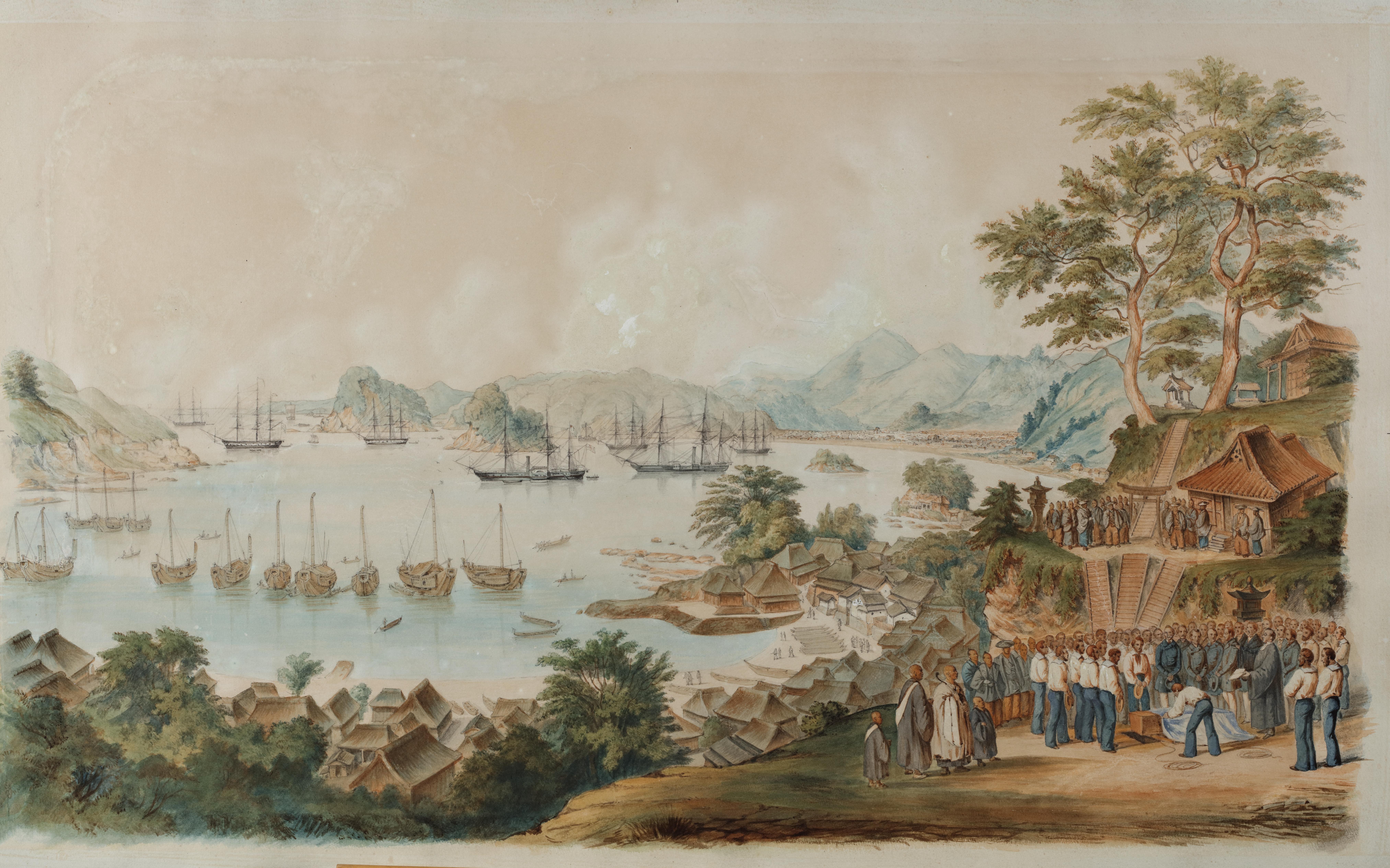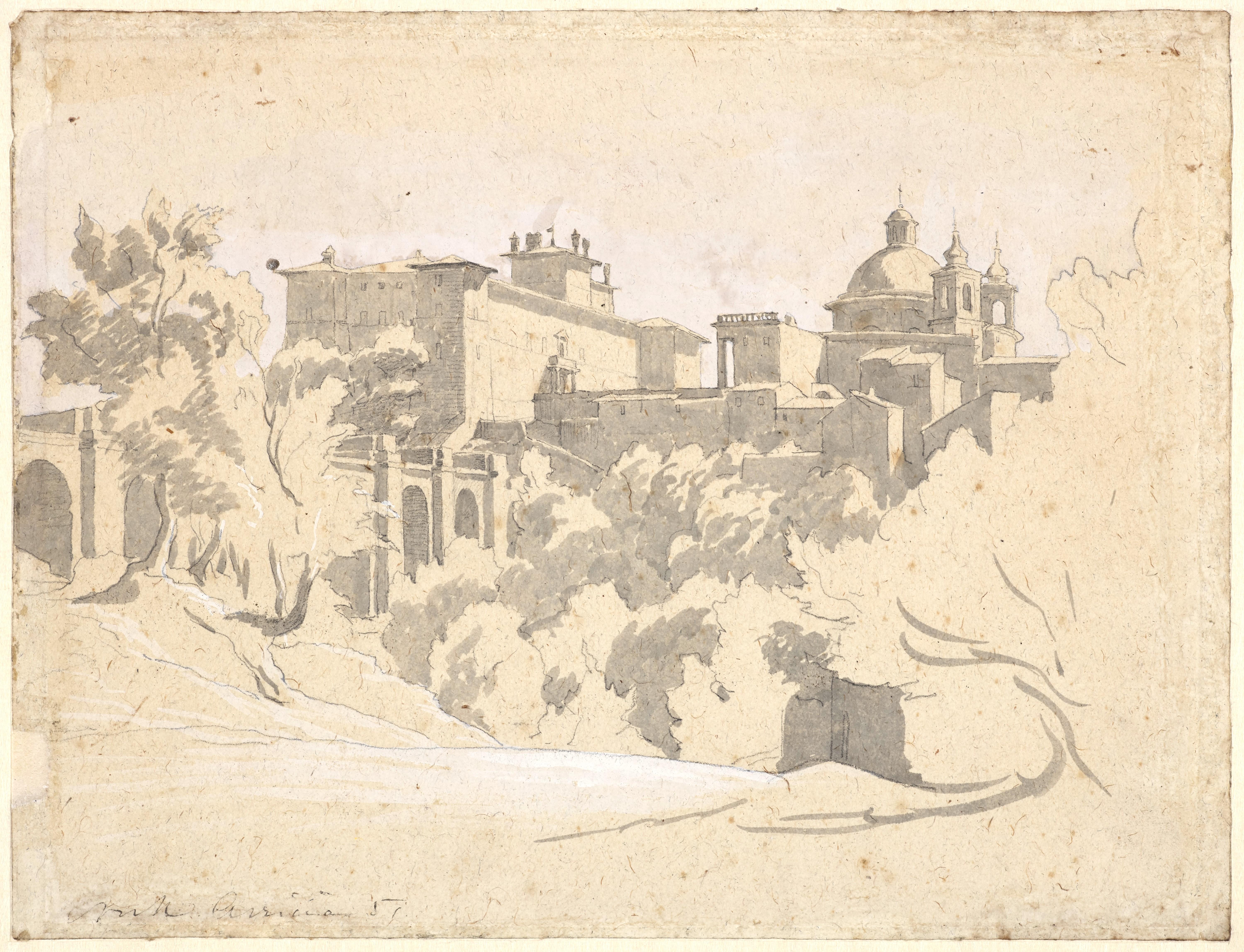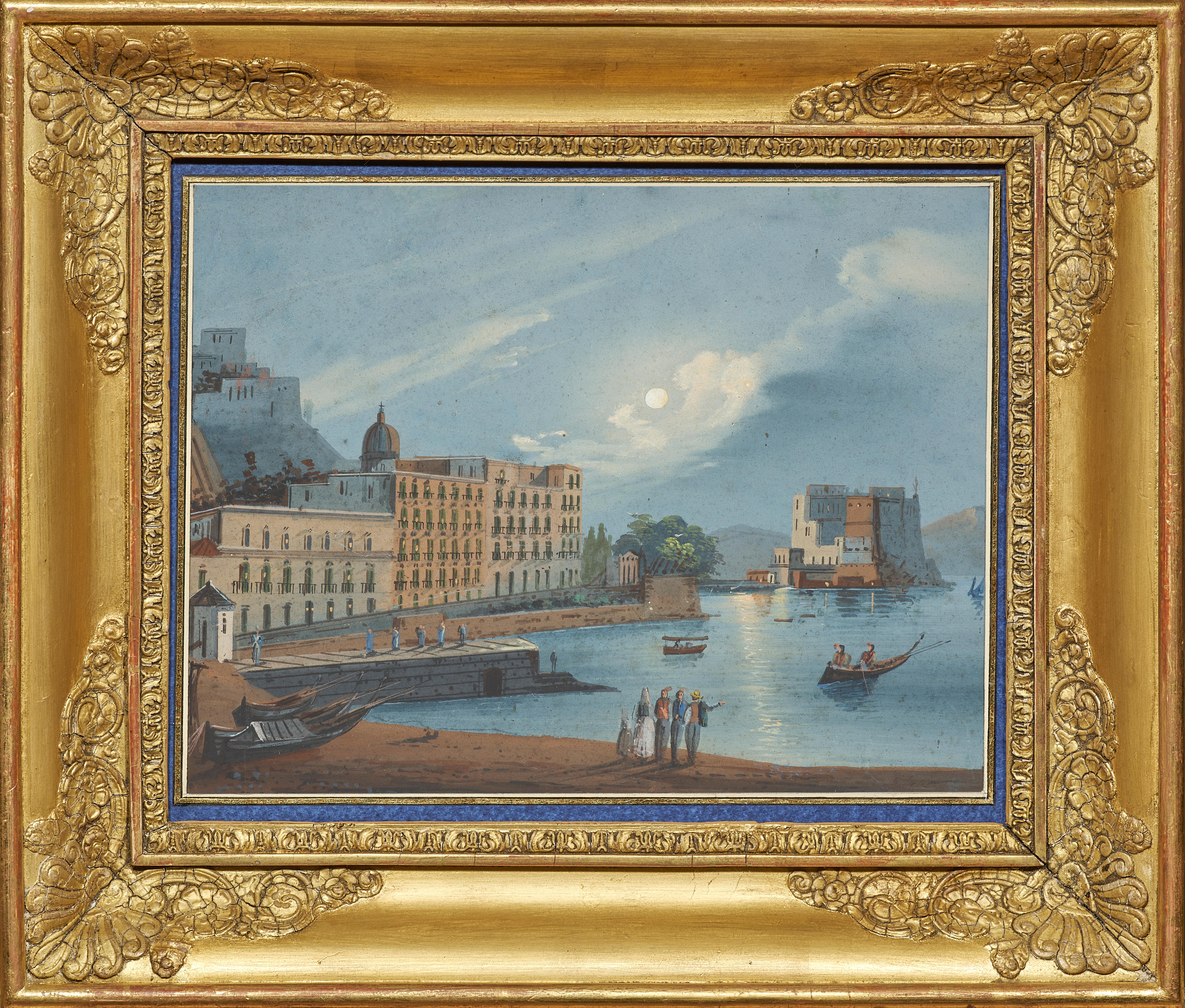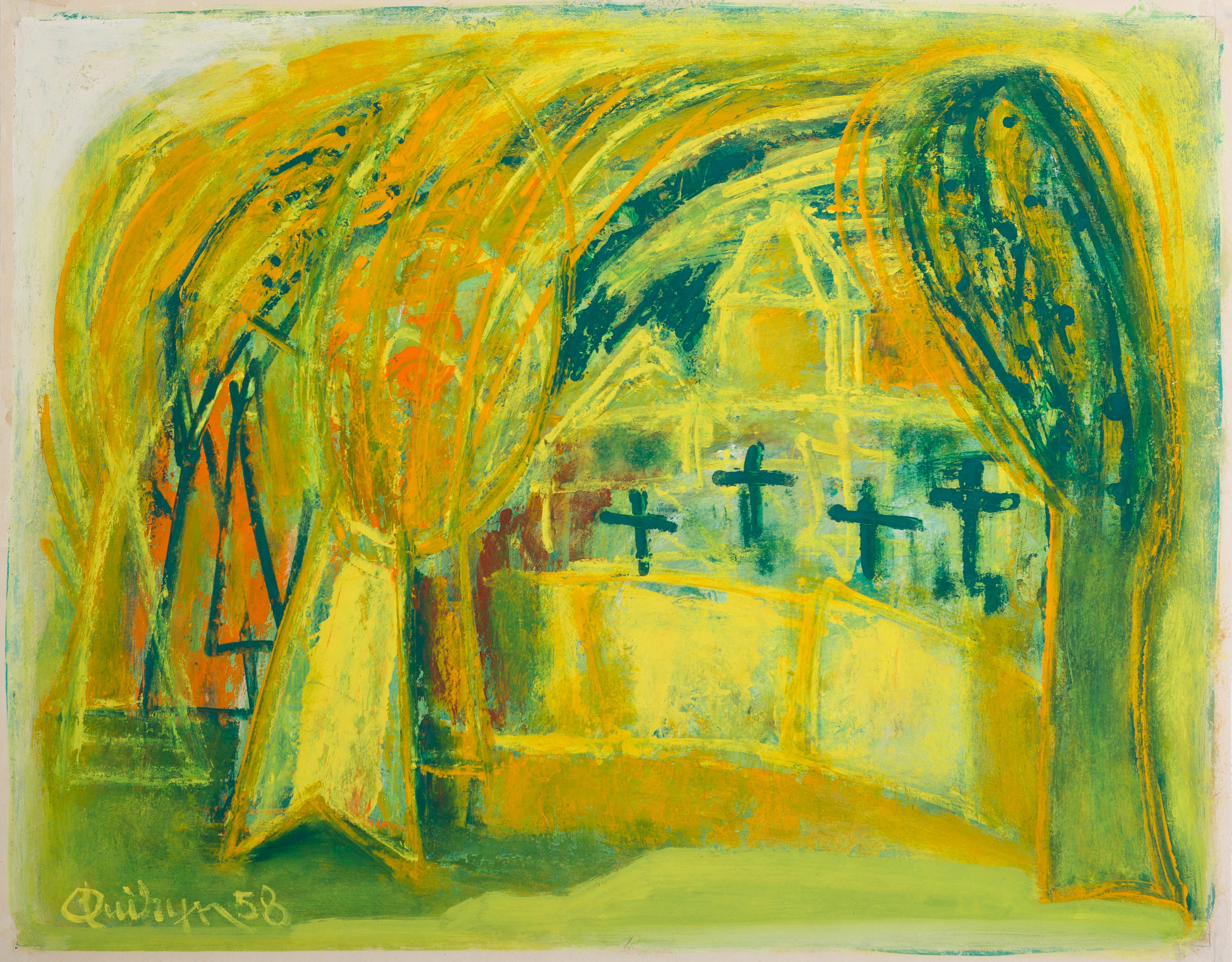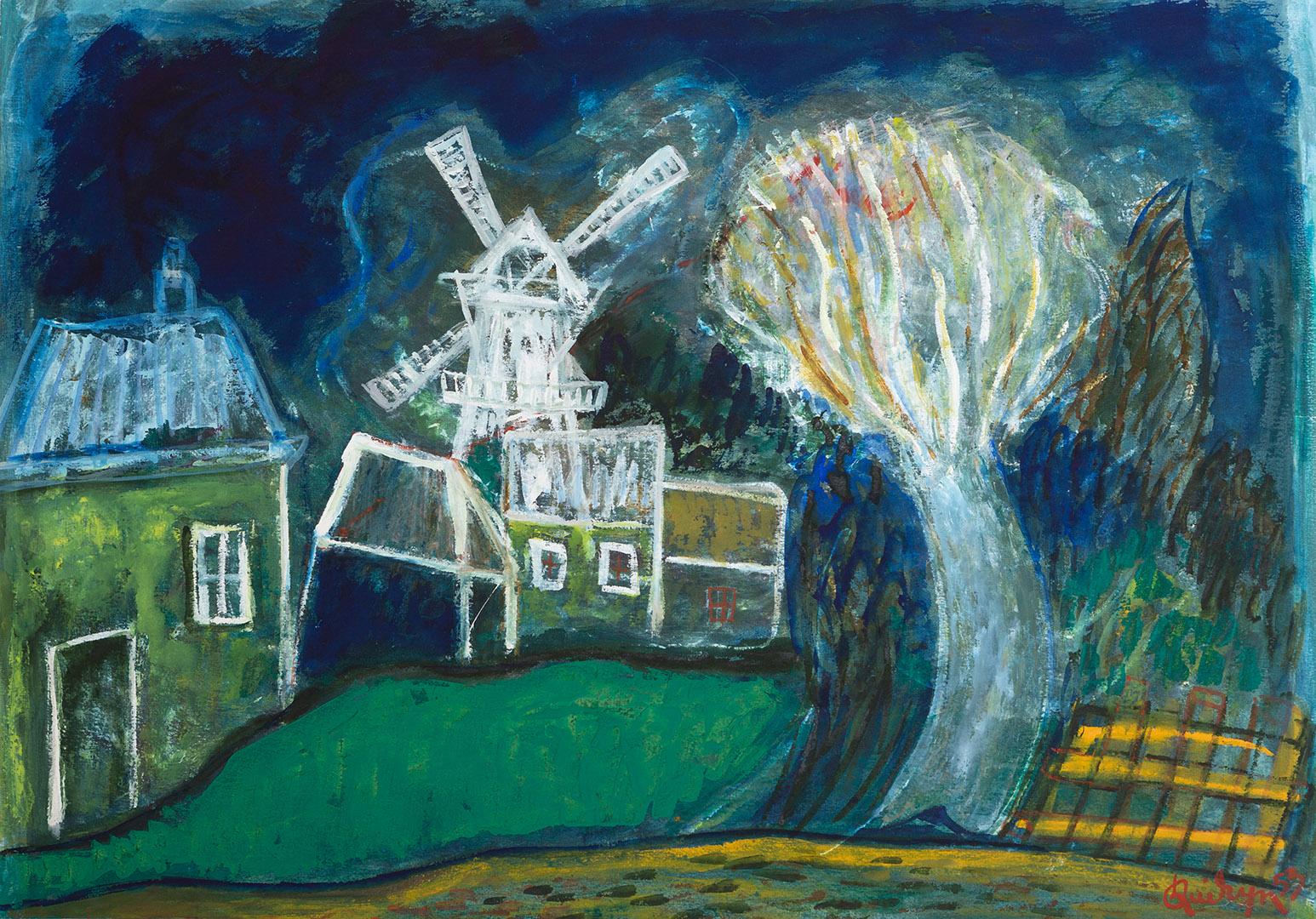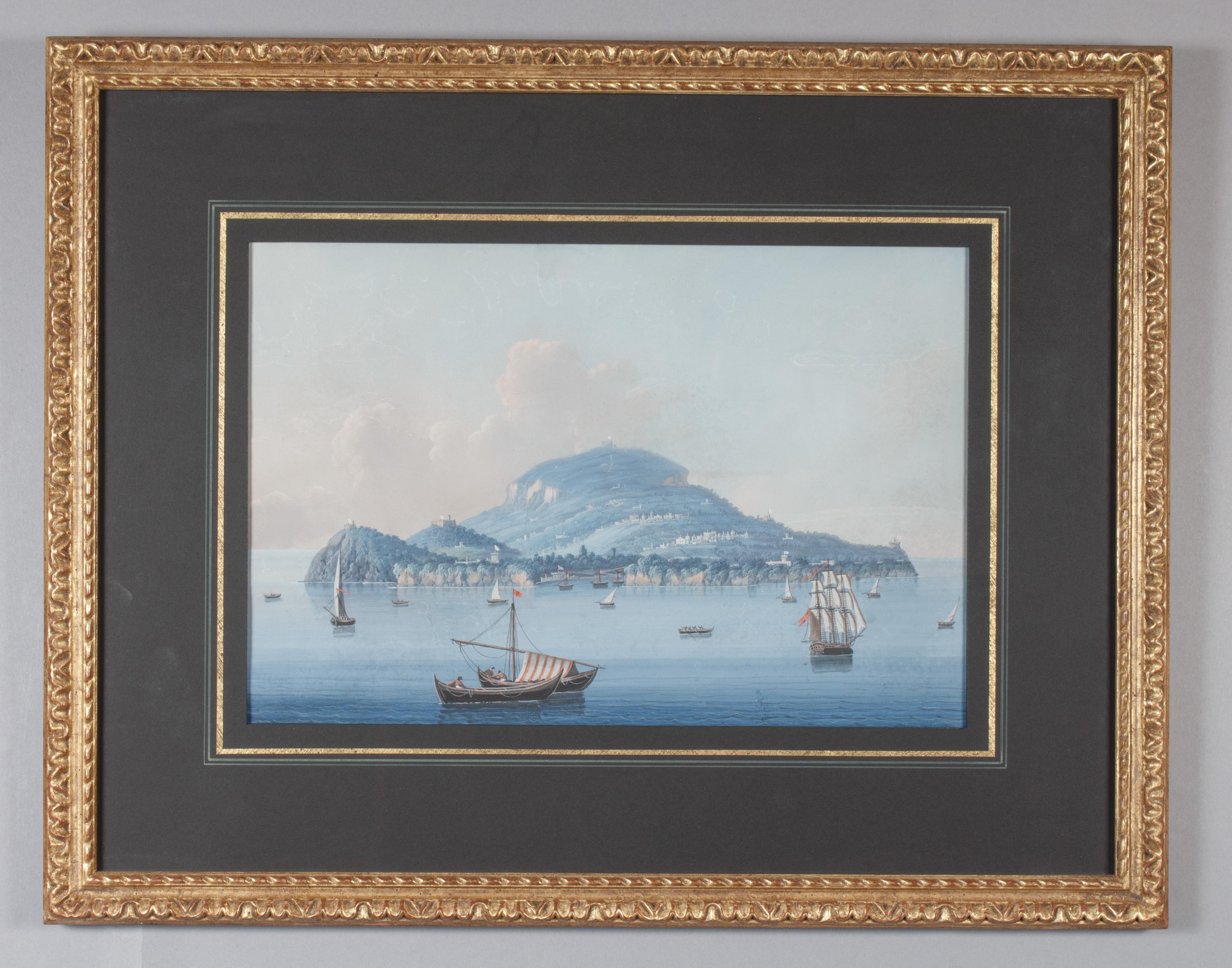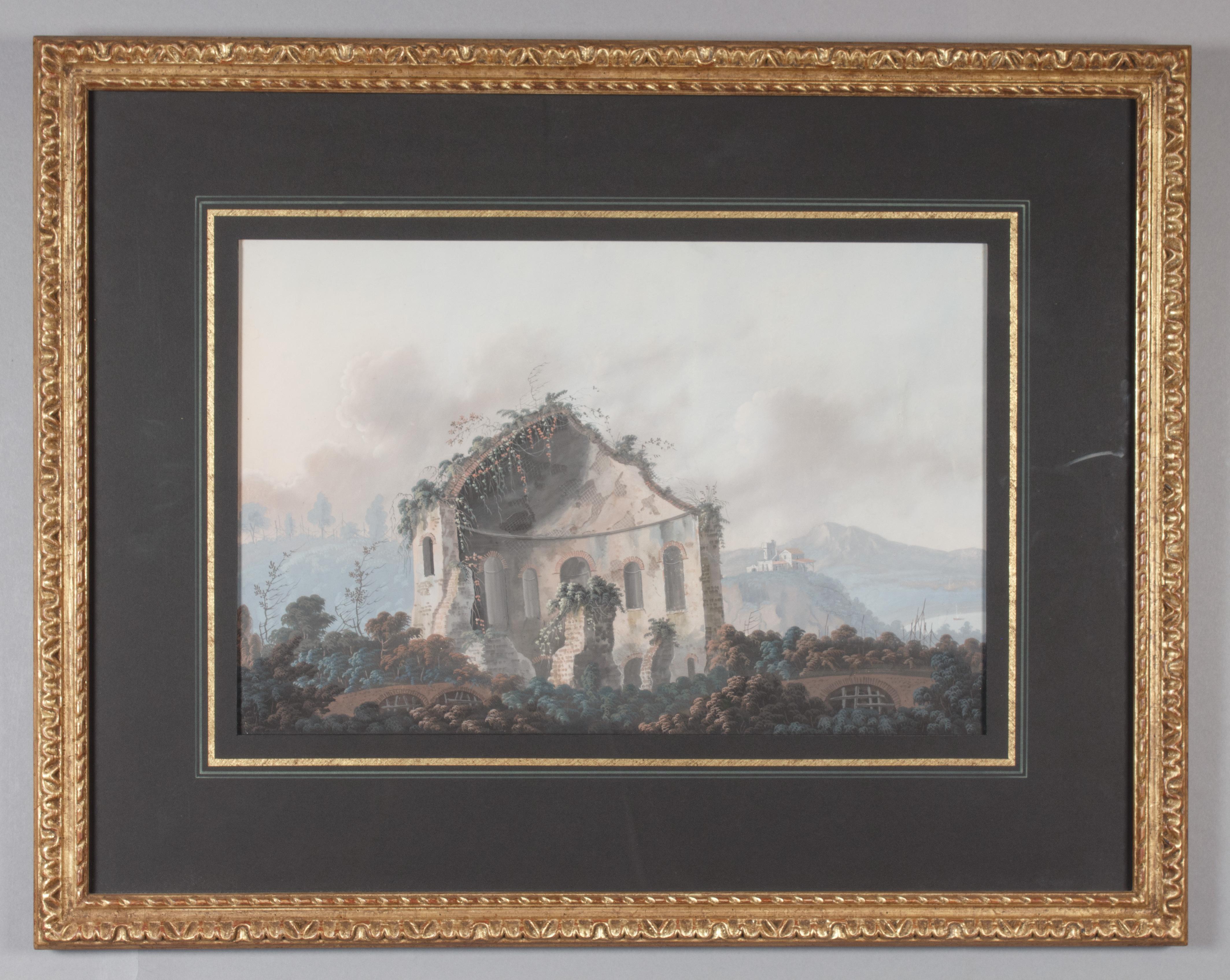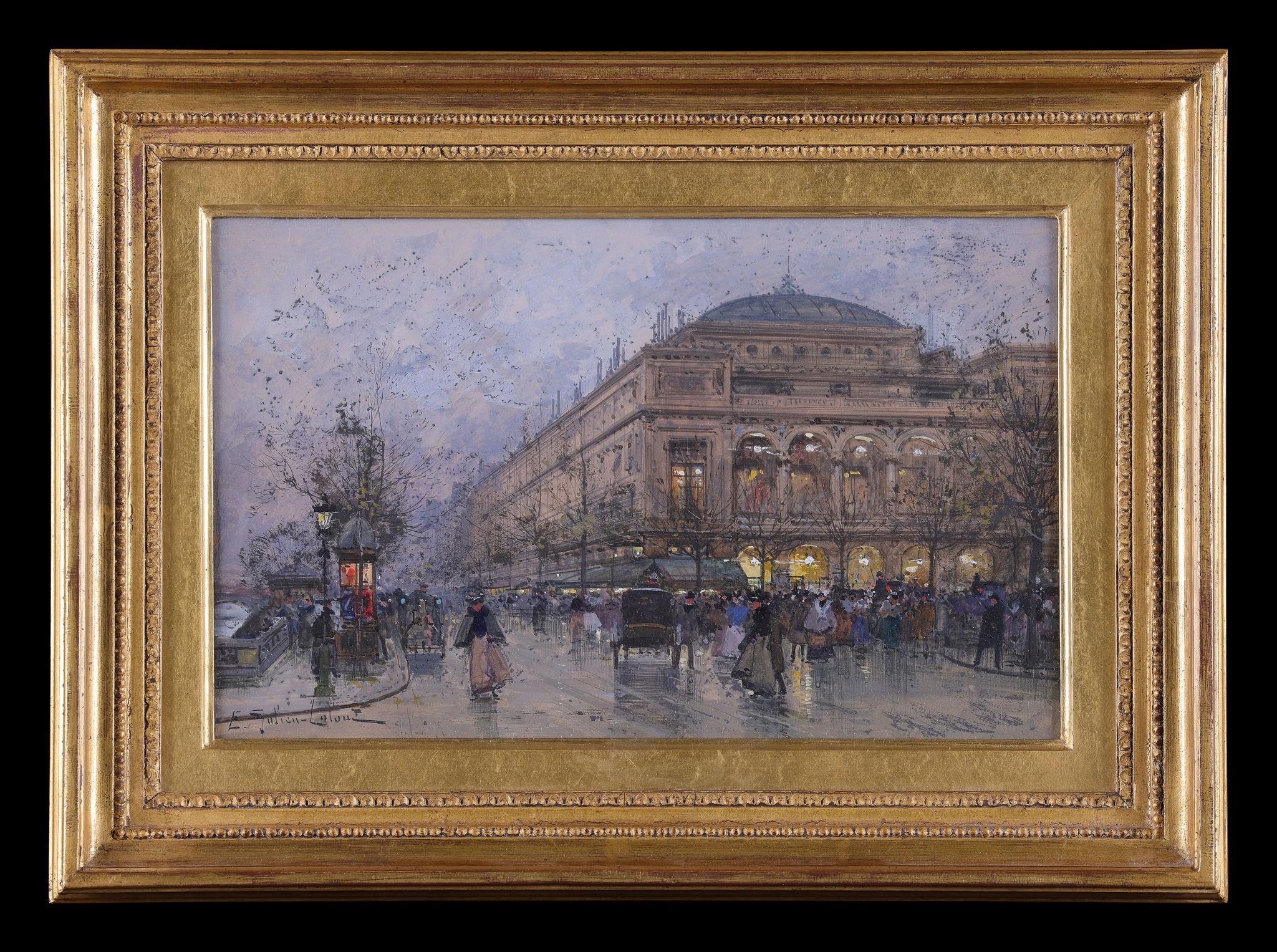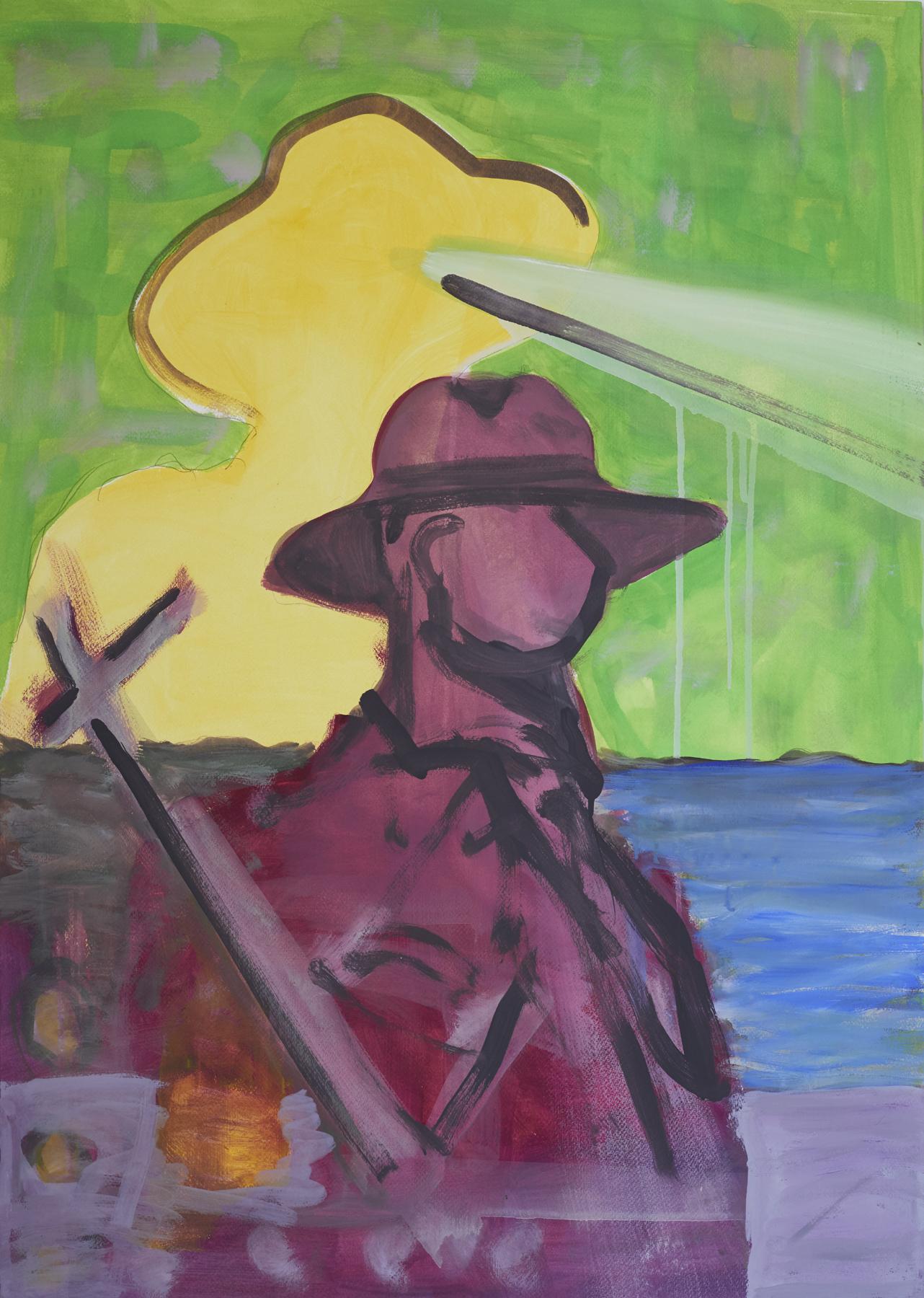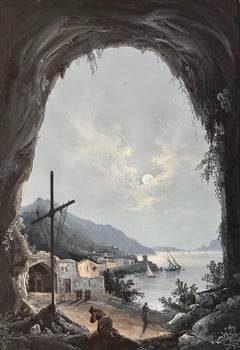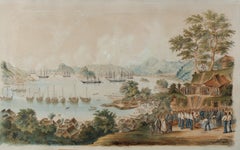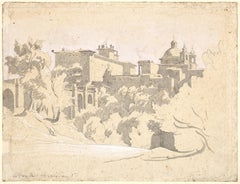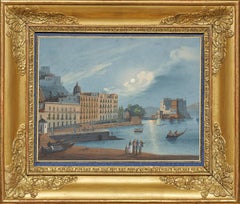
THE AMPHITHEATRE AT TAORMINA, WITH ETNA IN THE DISTANCE
Want more images or videos?
Request additional images or videos from the seller
1 of 10
Gabriele CarelliTHE AMPHITHEATRE AT TAORMINA, WITH ETNA IN THE DISTANCE1891
1891
About the Item
- Creator:Gabriele Carelli (1820 - 1900, Italian)
- Creation Year:1891
- Dimensions:Height: 20.08 in (51 cm)Width: 28.35 in (72 cm)
- Medium:
- Period:
- Condition:In excellent condition for its age, with little to no colour fading or deterioration and no apparent surface damage.
- Gallery Location:London, GB
- Reference Number:1stDibs: LU2110211639132
About the Seller
No Reviews Yet
Vetted Seller
These experienced sellers undergo a comprehensive evaluation by our team of in-house experts.
Established in 2020
1stDibs seller since 2022
More From This SellerView All
- Gardens of the Villa d'Este by Sunset, TivoliBy Charles-Louis ClérisseauLocated in London, GBCHARLES-LOUIS CLÉRISSEAU (1721-1820) THE GARDENS AT THE VILLA D'ESTE AT SUNSET, TIVOLI Signed l.r. Clérisseau Pen & black ink, pencil, and watercolour, heightened with bodycolour 45.1 x 59 cm 81 x 77 cm [Framed] Provenance: [Purchased by a previous owner in the U.S. for $34,000 according to an earlier label] Private Collection, Madison Avenue, N.Y. ‘I found out Clérisseau .. in whom tho’there is no guile, Yet there is the utmost knowledge of Architecture, of perspective, and of Designing and Colouring I ever Saw, or had any conception of; He rais’d my Ideas, He created emulation and fire in my Breast. I wish’d above all to learn his manner, to have him with me at Rome, to Study close with him and to purchase of his works ..’ (Robert Adam to his brother James, 19th February 1755) Clérisseau was born in Paris and studied there under the auspices of Germaine Boffrand, an architectural draughtsman. At just 25 years old, Clérisseau won the foremost architectural prize in France, the Prix de Rome, and so travelled to the French Academy in Rome (housed in the Villa Medici) to take up residence as a pensionnaire. He arrived in 1749, and began to study under Giovanni Paolo Pannini, the great painter of architectural capricci. Clérisseau befriended two other great architectural draughtsmen, Giovanni Battista Piranesi, and Claude-Joseph Vernet. Clérisseau remained in Rome for eighteen years, becoming an authority on antique Roman architecture, undertaking his own works, including his famous ruin room at the Trinita dei Monti convent, as well as teaching and acting as an artistic cicerone for other visitors. These visitors comprised a series of winners of the Prix de Rome, as well as French and British Grand Tourists, including some of the leading contemporary exponents of British neoclassicism, such as William Chambers and Robert and James Adam. For part of the 1750s, Clérisseau and Robert Adam shared lodgings in the Casa Guarnieri, near to the Spanish Steps. This was arguably one of the most important periods during Adam - who would become one of Britain’s most renowned architects. In his correspondence from this time, Adams mentions how Clérisseau suggested that he first learn to draw a plethora of ornamental motifs, often from Clérisseau’s own designs, before attempting full-scale architectural drawings. Clérisseau and Adam’s drawings from that time are largely rendered in pencil, pen and watercolour, and are either capricci or records of architecture, fragments and ornamental motifs from the buildings they encountered throughout Italy. The latter appear, on the whole, to have been drawn from life. On occasion, Clérisseau’s well-documented distortions of perspective, so as to show a piece of architecture to its best advantage, can be seen in Adam’s work too. The drawings utilise Clérisseau’s characteristic mode of depicting architecture in solid lines of ink but complement this with hazy watercolour backgrounds and imagined topographies. In 1757, Clérisseau even accompanied Robert Adam to Spalatro, Dalmatia (now Split, Croatia) for five weeks in order to survey the ruins of the Palace of the Roman Emperor Diocletian for publication. Following Robert’s departure from Italy, Clérisseau supervised the production of the engravings for his publication, Ruins of the Palace of the Emperor Diocletian at Spalatro… (1764). Moreover, many of the expedition drawings finally selected for engraving are thought to have been by Clérisseau himself rather than Adam or the other accompanying draughtsmen. However, he received no credit for this in Adam’s subsequent book, though this did nothing to stop his reputation’s ascendence. Clérisseau returned to Paris in 1767, a hugely respected artist in his own right. From the French capital, he cultivated a list of eminent clients, which included Catherine the great (who commissioned designs for a house and a triumphal bridge from the artist). The Russian Empress even gave Clérisseau the title Premier Architecte de Sa Majestée Impériale and made him an honorary member of the Imperial Academy of Fine Arts. In 1774, the 1st Marquis of Lansdowne commissioned Clérisseau to make designs for a library for Lansdowne House on Berkeley Square, London, but this was not executed. Soon afterwards, in 1785, Clérisseau was approached by Thomas Jefferson, then the United States Minister to France, to design the Virginia State...Category
Late 18th Century Landscape Drawings and Watercolors
MaterialsWatercolor, Gouache, Pen, Pencil
- FIGURES BY A STREAM IN AN ARCADIAN LANDSCAPELocated in London, GBFIGURES BY A STREAM IN AN ARCADIAN LANDSCAPE Signed & dedicated l.l. a son ami Gallier / Ach. Benouville Pencil, brown washes, chalk & bodycolour on...Category
Mid-19th Century Landscape Drawings and Watercolors
MaterialsGouache, Pencil, Chalk
- VIEW OF AMALFI FROM THE GROTTA DEL CONVENTO DEI CAPPUCCINILocated in London, GBGIOACCHINO LA PIRA (fl.1839–1870) VIEW OF AMALFI FROM THE GROTTA DEL CONVENTO DEI CAPPUCCINI Titled & signed verso Gouache on paper 45 x 30 cm La Pira was an Italian painter, active almost exclusively in Naples in the mid-19th century. He painted solely in gouache, like many of his fellow Neapolitan artists who catered to the burgeoning tourist trade in Naples, though he is one of the comparatively select few who rose above the anonymous mass of such artists. Such was his renown in this genre, he was mentioned in John Murray’s hugely popular A Handbook for Travellers in Southern Italy (from the 6th ed., London, 1869). Like his peers, La Pira painted the more popular panoramas and genre scenes from Naples, Capri and along the Neapolitan coastline; however, it was his distinctive knack for dramatic lighting and freshness of atmosphere that distinguished him from his contemporaries, as the present work’s moonlight shows to powerful effect. Gioacchino, for whom there is very little in the way of documentary biographical evidence, is known to have been one of three artist-brothers. While we do not know his birth and death dates, no paintings...Category
Mid-19th Century Landscape Drawings and Watercolors
MaterialsGouache
- AN EXTENSIVE DESERT LANDSCAPE WITH A WARRIOR ON CAMELBACKBy Augustus Osborne LamploughLocated in London, GBAUGUSTUS OSBORNE LAMPLOUGH, A.R.A., R.W.S (1877-1930) AN EXTENSIVE DESERT LANDSCAPE WITH A WARRIOR ON CAMELBACK Signed l.l. A Lamplough ARA ...Category
19th Century Landscape Drawings and Watercolors
MaterialsWatercolor
- A VIEW OF PART OF STENAY FROM BEYOND THE TOWN WALLS (MEUSE, FRANCE)By Gabriel PerelleLocated in London, GBA VIEW OF PART OF STENAY FROM BEYOND THE TOWN WALLS (MEUSE, FRANCE) Pen & ink on laid paper 11.5 x 23cm Provenance: Private Collection, France The present work likely relates to Israel Silvestre's Profil de la Ville et Citadelle de Stenay, engraved by F. Noblesse (Faucheux : 232.33 Etat : 1 / Baré : N° 659, see third and fourth images above). A more strictly topographical study by Silvestre, from which the print itself was derived, is in the Louvre Collections...Category
Mid-17th Century Landscape Drawings and Watercolors
MaterialsInk, Pen
- THE FALLS AT TIVOLI, WITH A DISTANT VIEW OF THE TOMB OF THE PLAUTIILocated in London, GBTHE FALLS AT TIVOLI, WITH A DISTANT VIEW OF THE TOMB OF THE PLAUTII Signed to mount JPx Bidauld f. Pen & ink with monochrome washes on laid paper with Strasbourg Lily watermark 30 x ...Category
Late 18th Century Landscape Drawings and Watercolors
MaterialsPen, Ink
You May Also Like
- 1854 Funeral of R. Williams at Gyokusen-ji Temple, Shimoda, with Commodore PerryLocated in Amsterdam, NLWilhelm Heine (Dresden 30 January 1827-Löbnitz 5 October 1885) ‘Funeral of Robert Williams in the cemetery of the Temple Gyokusen-ji at Shimoda in April 1854’ With a sticker on the reverse of the frame by Coupil & Co. 1855 Watercolour on paper, H. 57 x W. 92 cm Depicted is the Bay of Shimoda with seven American ships including the two paddle-wheel warships USS Mississippi and Susquehanna. On the Gyokus- en-ji temple grounds on the right is the coffin in the middle with the remains of US marine Robert Williams, ready to be lowered into the grave. Looking on from the left are the Buddhist monks and Japanese officials who joined the first Christian funeral on Japanese soil. Around the grave are US marines, Commodore Perry...Category
Mid-19th Century Figurative Drawings and Watercolors
MaterialsPaper, Ink, Watercolor, Gouache
Price Upon RequestFree Shipping - View of Ariccia, a preparatory drawing by Achille Bénouville (1815 - 1891)Located in PARIS, FRThis very modern drawing presents a view of Ariccia, a small town 25 kilometres south-east of Rome. The Palazzo Chigi (in which the film-maker Luchino Visconti would film a large part of The Leopard a century later) and the adjoining church are seen from the bottom of the ravine that surrounds the town. This drawing is a moving testimony to the attraction of the city for artists of the Romantic period, who established in Ariccia a vivid artists' colony. 1. Achille Bénouville...Category
1850s Romantic Landscape Drawings and Watercolors
MaterialsInk, Gouache, Pencil
- View of the Ovo Castle in the Moonlight, a 19th century Neapolitan gouacheLocated in PARIS, FRNeapolitan gouaches appeared in the eighteenth century when tourism in the Naples area was developing: the discoveries of Herculaneum and Pompeii made this city a mandatory stop on the Grand Tour, the journey made by wealthy Europeans to complete their education. Generally small in size for ease of transport and affordable in price, these gouaches were the ideal travel souvenir that these tourists of the early days were bringing back to capture the idyllic landscapes they had discovered during their journey and to share them with family and friends upon their return at home. The Bay of Naples and the eruptions of Vesuvius are the favourite themes of these views. Here we have a view of the Ovo Castle, which was rebuilt on the island of Partenope, in the middle of the Bay of Naples and about a hundred metres from the shore by the Normans in the 12th century on antique ruins...Category
Early 19th Century Romantic Landscape Drawings and Watercolors
MaterialsGouache, Paper
- In the manner of Herman van Swanevelt (1603-1655) An Italianate Landscape.Located in Sydney, NSWDutch School, 17th Century. In the manner of Herman van Swanevelt (1603-1655). Title: An Italianate Landscape. This work closely relates to a group called the Italianate painters. Th...Category
17th Century Baroque Landscape Drawings and Watercolors
MaterialsPaper, Gouache
- St. Cirque Madelon, 1958Located in BLARICUM, NLQUIRIJN VAN TIEL Rotterdam 1900-1967 Rhoon CHURCH COURT, ST. CIRQUE MADELON 1958 Gouache on paper 57 x 45 cm. Signed and dated: lower left "Quirijn ...Category
1980s Abstract Expressionist Drawings and Watercolor Paintings
MaterialsGouache
- DorpsgezichtLocated in BLARICUM, NLQUIRIJN VAN TIEL Rotterdam 1900-1967 Rhoon DORPSGEZICHT 1953 Gouache on paper 42 x 60 cm. Signed and dated: lower right ‘Quirijn 53’ Provenance: Pr...Category
1950s Abstract Expressionist Landscape Drawings and Watercolors
MaterialsGouache
Recently Viewed
View AllMore Ways To Browse
Italian Architectural Drawings
At The Theatre Painting
Drawing Academy Classical
Classical Ruins
Drawing Rooms
French Architectural Watercolor
Watercolour Egypt
Egypt Watercolour
Egypt Watercolor
Small European Watercolors
View Naples
Watercolors North Africa
Classical Sketches
Moroccan School
Mediterranean Watercolor
Moroccan Drawing
Morocco Drawing
Small Sicily
